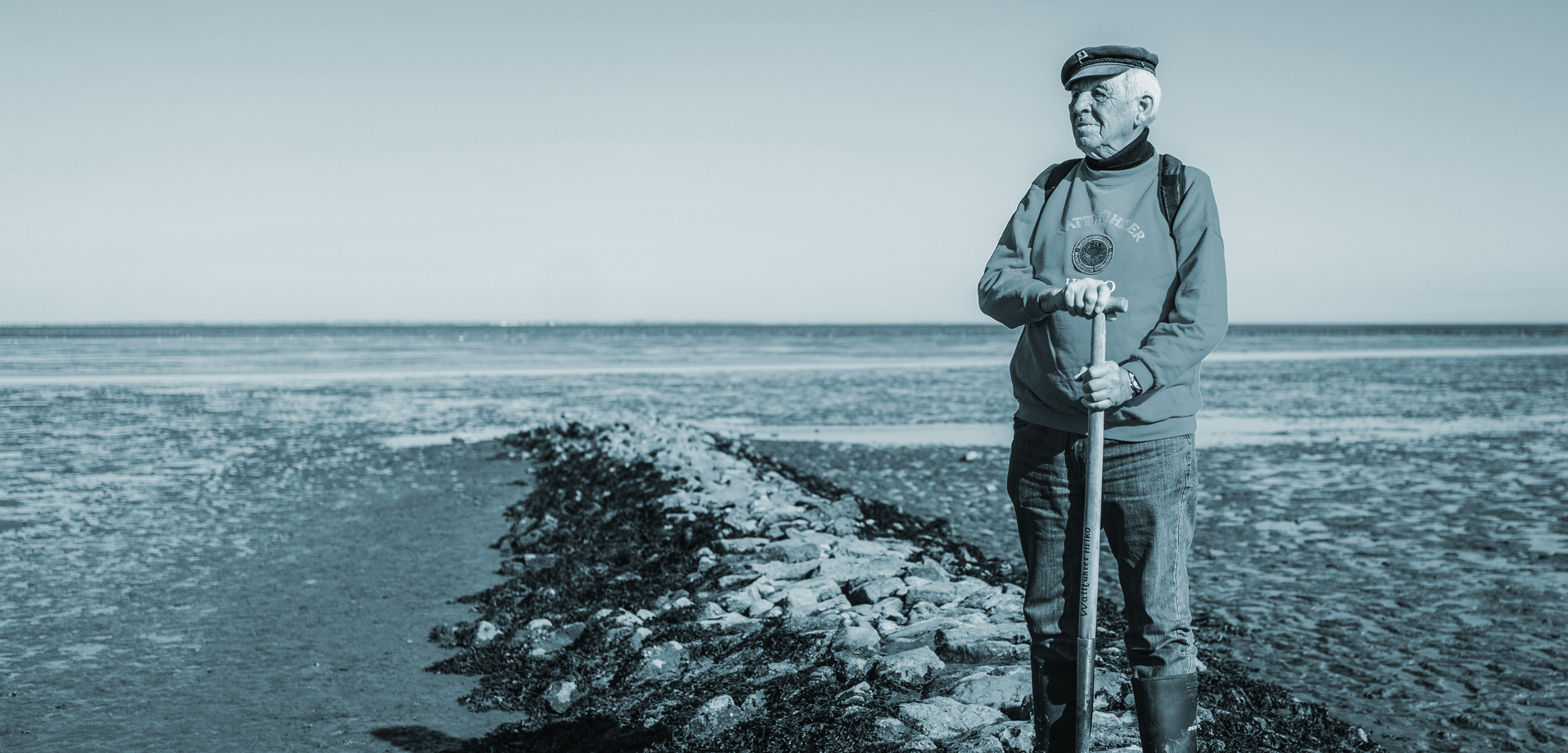Coastal Job: Mudflat Guide
Veteran guide Heiko Campen helps visitors to the Wadden Sea safely explore a vast muddy landscape.
Article body copy
Some people work in cubicles, others work in kitchens, but the most intriguing workplace of all may be the coast. Meet the people who head to the ocean instead of the office in our Coastal Jobs series.
The Wadden Sea, a 7,430-square-kilometer expanse of sand and mud exposed along the North Sea coastline at low tide, is the largest unbroken system of intertidal flats worldwide. Heiko Campen, an independent guide in the town of Norden, Germany, takes people safely onto the flats, interpreting the area’s natural and cultural history.
The other guides and I always warn, Don’t go into the mudflats on your own! Take a guide. The mudflats look so harmless, but they can be treacherous.
Once, two young men walked to one of the islands and got caught in a fog. Our winds usually blow from the west, but if they switch to come from the north, that cold wind hits the sun-warmed mud and a dense fog springs up. Without a compass, you walk in circles until the water returns and you drown. Those two men died. People also drown in the tidal creeks that crisscross the mudflats, as they can be very deep.
Nothing like that has ever happened on my walks. I’ve done tours for 58 years. I’m 87 now. Usually, I go out every other day from late spring to fall. Many people come to the North Sea because the air is healthy. It’s best on stormy days, when the waves crash against the dike and release aerosols.
I was born just behind the dike. It stretches all along the coast to keep water away from low-lying land. My family has lived here since the 1200s. Most were livestock and grain farmers. Their thinking was that you shouldn’t go near the dike, that the water was dangerous. But I’ve always felt connected to the sea. As a toddler, I insisted on going to the harbor daily. As a teenager, I taught myself to swim and explored the mudflats. I worked in a tea company and as a teacher. Then, when tourists started coming in the 1950s, somebody asked if I could take them on a mudflat tour. That’s how I began. I was the first one to really do this in our town.
Earning money is nice, but I guide because I love telling people about this unique environment. There’s nothing else like it! I’m fascinated by the birds. In the areas where the Wadden Sea has salt marshes, millions stop by on their migrations.
Our biggest shells are the three-inch [7.6-centimeter] sand gapers. Some think that Vikings brought the species back from America. Sometimes, you also find pottery from a local village that washed away in a storm in 1717.
Nowadays, mudflat guides have to take various tests and get certified. You have to know how to time your walks so the tide doesn’t cut you off. You also need to know where to go: big storms can shift the ground. There might be soft mud where there was firm sand before.
We carry backpacks with signal pistols, first aid kits, and rope in case somebody gets stuck. Once you’ve sunk in mud to your waist, it’s hard to get out. Anybody approaching on foot will sink, too. The fire department has to conduct rescues by skimming a dinghy across the mud. I’ve helped free about half a dozen people.
These days, I stay close to the dike so that even families with kids can join my walks. But the longest walks I’ve done have been to an island called Memmert. It’s 23 kilometers away and takes more than five hours. I’ve walked there at least 20 times. I could still do it. But I don’t have the urge.
My permit is good until 2025. By then, I’ll be over 90 and probably won’t do any more tours. I could have earned more money working in the big cities inland. But I’d never move away! As teenagers, we sometimes went into the mudflats on warm nights when there were small bioluminescent organisms in the sea. You came out of the water and golden droplets rolled off you, like pearls.

